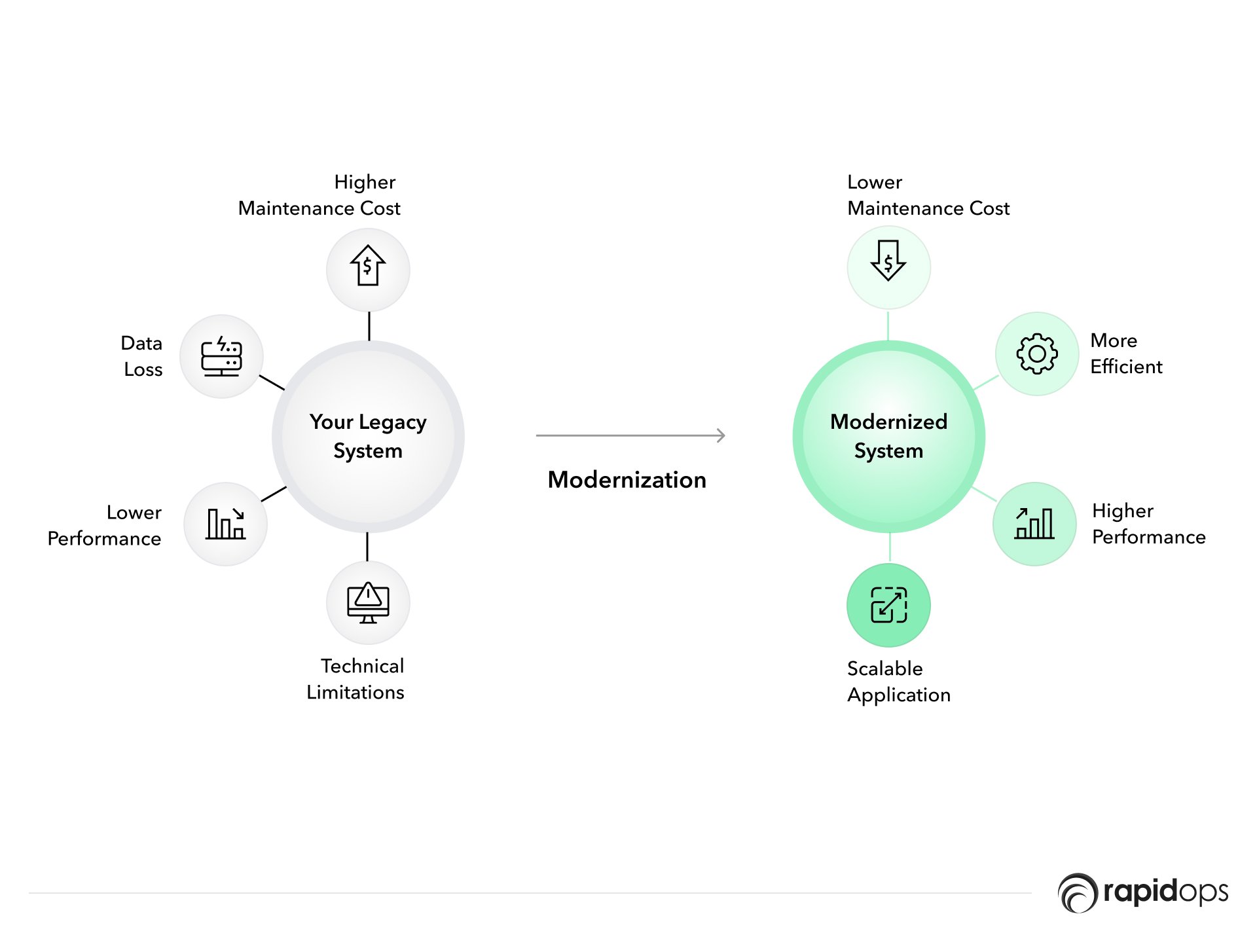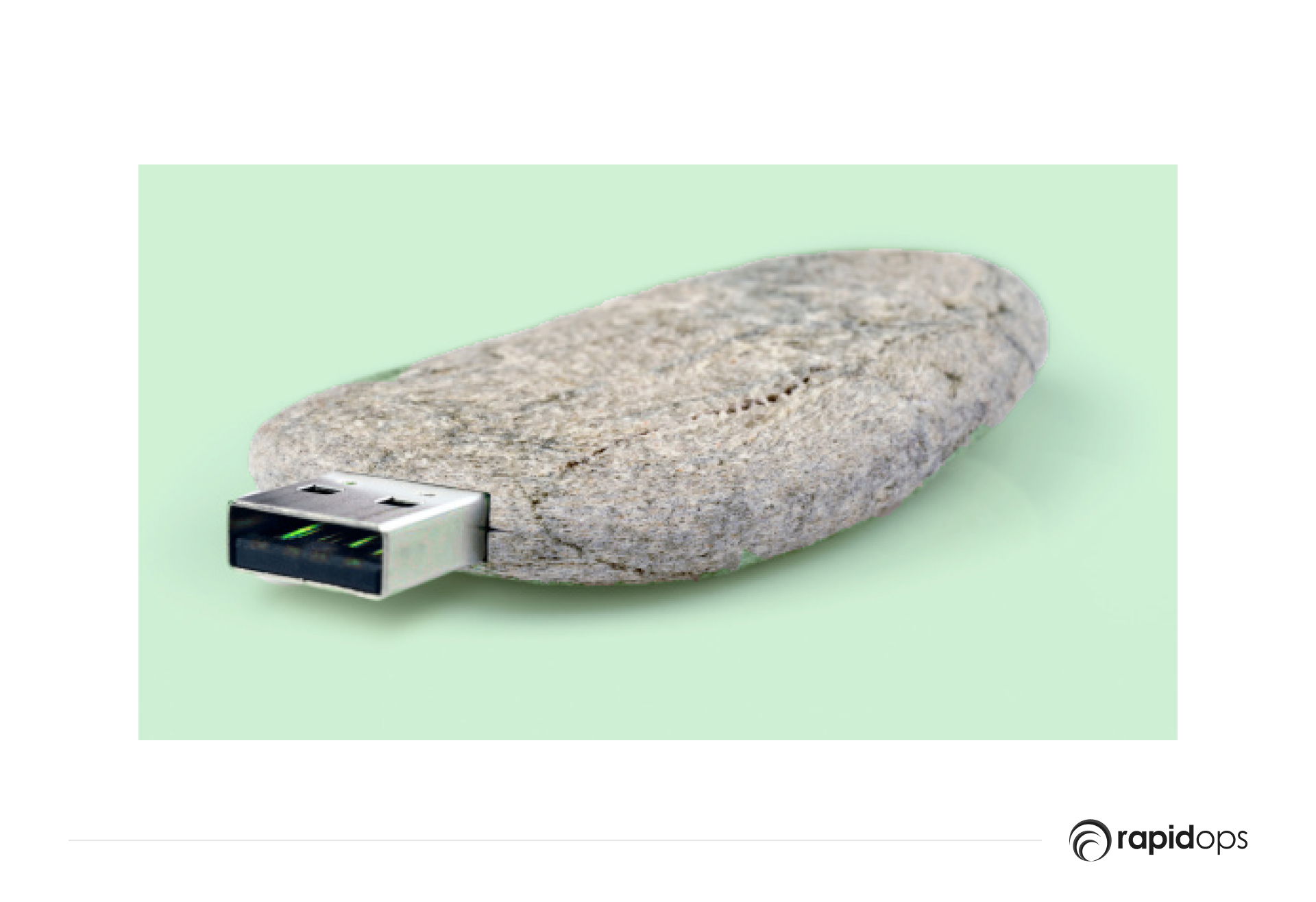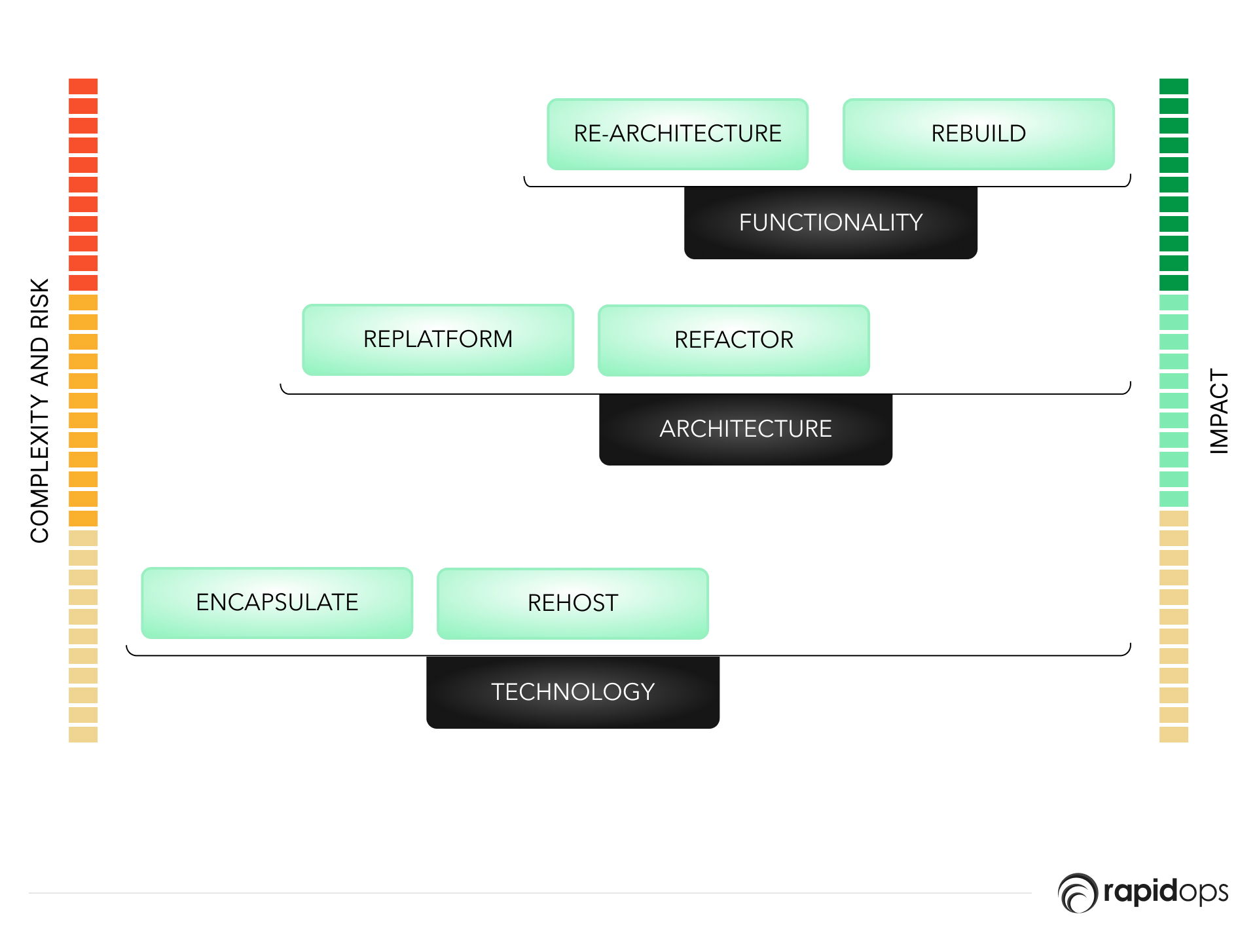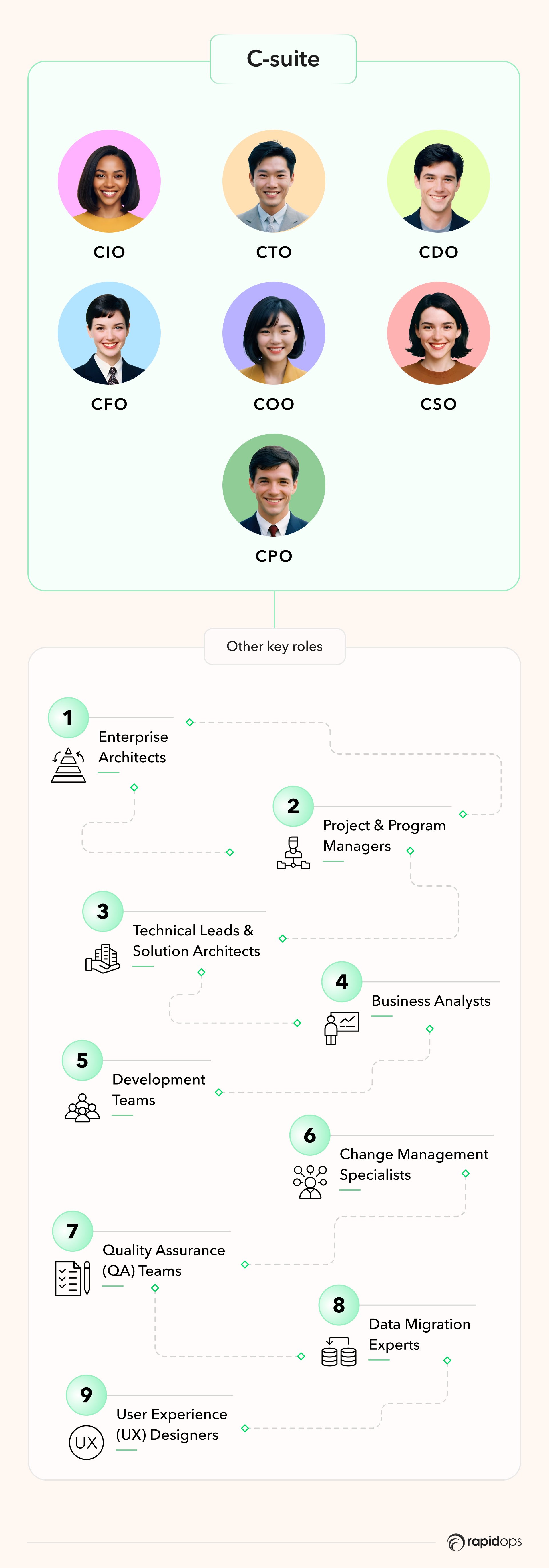- Transformation
- 20 min read
- May 2024
Why Legacy Systems & Applications Are a Threat
Key Takeaways
Imagine losing sales because your outdated e-commerce platform can't handle peak traffic.
This is the harsh reality for businesses clinging to legacy systems in today's fast-paced digital world.
Modernizing your systems can unlock various benefits:
- Increased agility
- Enhanced security
- Improved customer experience
- Ability to leverage cutting-edge technologies that drive growth
Established companies' inclination to keep their legacy systems makes sense. It helped them dominate the market and eased their growth rate.
But now, they need to opt for legacy system modernization as these systems are reaching a maturity level that requires disruption to match the advancements of current market standards.
Moving ahead in a competitive market space where AI (Artificial Intelligence) advances and data-driven business models give organizations a fresh take, many organizations recognize the need to implement the next-gen technology stack.
Do you feel your business is stuck in second gear?

The culprit could be your trusty yet old legacy system. While reliable in their own right, these systems often anchor you near the shore when all you want to do is sail the sea!
Millions of businesses worldwide grapple with outdated technology that stifles innovation and limits their potential for growth and adaptation in a rapidly evolving and competitive market.
These legacy systems are deeply embedded into the business infrastructure.
They are often comprised of outdated software or hardware that, despite being tailor-made to the organization’s needs and reliable to a degree, fail to meet the dynamic demands of modern business environments.
Think about the challenges you face every day.
- Slow processing time?
- Is manual data entry dragging down productivity?
- Difficulty integrating with new technologies or keeping pace with evolving customer demands?
These are all classic signs of a legacy system struggling to keep up.
Legacy systems can become a breeding ground for inefficiency and frustration. They often have:
- Outdated technologies: Built on older programming languages and hardware, they lack modern solutions' processing power and agility.
- Data silos: Information gets locked away, making it difficult to get a holistic view of your business and hindering data-driven decision-making.
- Security vulnerabilities: Legacy systems are prime targets for cyberattacks due to outdated security protocols.
- Limited Scalability: They struggle to adapt to changing business needs or growth spurts.
These limitations translate directly to lost opportunities.
Meanwhile, your competitors, with their modern systems, can:
- Deliver faster, more efficient services.
- Gain deeper customer insights for personalized experiences.
- Embrace new technologies to innovate and stay ahead of the curve.
The good news? You're not ‘that’ stuck!
Legacy system modernization isn't just about catching up. It's about leapfrogging the competition. Modernization is your opportunity to:
Unleash hidden potential: Modern systems are faster, more scalable, and brimming with untapped potential. Imagine the increased productivity and cost savings you could achieve.
Become a digital leader: Modernization isn't just about technology – it's about embracing agility and innovation. Respond faster to changing market demands and unlock new revenue streams with a modern system as your foundation.
Fortify your defenses: Legacy systems are prime targets for security breaches. Modernization lets you implement robust security measures, giving you peace of mind and protecting sensitive data.
Deliver an exceptional customer experience: Modern systems empower you to create a seamless and delightful experience for your customers.
What is legacy system modernization

A powerful engine and sleek design can only take you so far if the tires are worn and the fuel system is outdated. Legacy systems are like those old tires - they may have gotten you here, but they're holding you back from reaching peak performance.
Legacy system modernization is the strategic process of upgrading outdated information systems to improve their functionality, security, and efficiency. It's an ongoing effort aimed at:
- Simplifying your IT environment: Modernization can streamline complex legacy systems, reducing maintenance costs and making them easier to manage.
- Enhancing data consistency: Modernization ensures your data is accurate and readily available by integrating disparate systems and improving data management practices.
- Boosting collaboration: Modern systems often allow seamless data sharing and collaboration across different platforms and teams.
- Increasing process flexibility: Modernized systems are more adaptable, allowing you to effectively modify workflows and respond to changing business needs.
It's about breathing new life into your outdated technology, transforming it into a well-oiled machine that fuels growth and innovation.
Modernizing your legacy systems can unlock a hidden reserve of power and efficiency, giving your business the edge to outperform the competition.
However, we want to add an important note for business leaders here.
Legacy system modernization isn't just about upgrading old software or replacing outdated hardware; it's a strategic approach integral to broader digital transformation initiatives.
By modernizing legacy systems, companies can harness newer technologies, improve business processes, and ultimately drive greater value creation and competitive advantage.
As we delve deeper into this topic, we will explore the challenges associated with legacy systems, strategic approaches to modernization, and the immense benefits businesses can gain from modernizing legacy systems.
NOTE: This is not merely a technical upgrade but a transformational journey that can redefine the core of how businesses operate and thrive in the digital age.
Struggling with legacy system pain points? You're not alone!

Legacy systems – the dependable workhorses of the past – can become anchors in today's fast-paced business environment. While they may be familiar and functional, their limitations can hinder growth and innovation.
Here's a closer look at how legacy systems might be impacting your specific industry, along with examples of legacy systems:
1. Retail
Scenario: Imagine your brick-and-mortar store relies on a decades-old point-of-sale (POS) system.
Pain points
- Omnichannel disconnect: The system may not integrate with modern inventory management tools or online shopping platforms. This creates a fractured customer experience – online stock levels might not reflect in-store availability, and vice versa.
- Limited analytics: Legacy POS systems may lack advanced analytics capabilities. This makes tracking customer behavior, identifying buying trends, or personalizing promotions difficult.
- Security concerns: Outdated systems may be vulnerable to security breaches, exposing customer data and financial information.
2. Manufacturing
Scenario: Your production lines are controlled by legacy software running on aging hardware.
Pain points
- Limited flexibility: Legacy systems may struggle to adapt to rapid changes in product designs or production volumes. This hinders your ability to respond quickly to market demands.
- Maintenance challenges: Finding technicians with expertise in maintaining these systems can be expensive and time-consuming. Upgrading or replacing critical components may become impossible due to incompatibility with newer parts.
- Inefficiency: Manual data entry and paper-based processes associated with legacy systems can lead to errors and delays in production planning and scheduling.
3. Supply chain and logistics
Scenario: Your warehouse relies on paper-based systems for order picking and tracking shipments.
Pain points
- Lack of visibility: Legacy systems cannot track inventory in real-time, leading to inaccurate stock levels and potential stockouts.
- Delayed deliveries: Manual processes can slow down order fulfillment, leading to delayed deliveries and dissatisfied customers.
- Limited optimization: Legacy systems may not integrate with real-time tracking technologies or advanced analytics to optimize logistics routes. This means higher transportation costs and difficulty responding to disruptions.
Why are legacy systems still used?

Apart from those you see in the image above, there are three other reasons that we can think of:
- Emotional connect
- Return on initial investment
- Confusion about where to start with modernization
While many might jump the gun and say, hey, the second point doesn’t make sense, if we are here, we have made great early profits with immaculate turnovers.
Don’t worry. We will clarify our stand while covering everything related to the existence of legacy systems in this section.
So, why do legacy systems persist?
Businesses often hold onto their legacy systems due to a mix of practical and, at times, sentimental reasons. Understanding these factors is crucial for any leader contemplating the leap toward system modernization.
1. The comfort trap
- Proven stability: Legacy systems have stood the test of time, consistently running without major failures. This reliability makes businesses cautious about undertaking changes that could jeopardize established operations.
- Fear of disruption: Upgrading critical systems can lead to unforeseen complications. The potential for operational downtime during a transition is a significant deterrent, as any interruption could impact daily business functions and customer service.
2. The high cost of holding on
- Sunk costs: Significant investments have been made in current systems through acquisition, customization, and maintenance. The immediate financial outlay and resource allocation required for a complete overhaul can be daunting.
- Unexpected expenses: Beyond the visible costs, modernization includes indirect expenses such as training employees on new systems, transferring existing data, and resolving compatibility issues with current processes.
3. Tech debt and integration headaches
- Technical debt: Many legacy systems use outdated technology that may no longer be supported, making maintenance challenging and costly. Finding IT professionals skilled in older technologies is becoming increasingly difficult.
- Customized solutions: Some systems are tailor-made to handle unique business operations. Replacing these can disrupt specific functions central to a company’s operations.
- Integration hurdles: Legacy systems often lack the flexibility to integrate smoothly with newer technologies, leading to additional complexities and costs in ensuring systems communicate effectively.
4. Change fatigue
- Comfort with familiarity: Employees accustomed to a particular system may resist switching to newer technologies. The transition requires training and support to adapt to new workflows.
- Organizational inertia: Legacy systems are deeply integrated into the workflows of many organizations. Changing these systems requires altering established processes, which can be a significant barrier to modernization.
While the hesitation to move away from legacy systems is understandable, business leaders must weigh in the potential drawbacks of working with outdated technology.
Examples of legacy systems in different industries
Here are detailed examples from the retail, manufacturing, and supply chain and logistics industries, where the impact of outdated systems is particularly acute:
1. Retail Industry: Point-of-sale (POS) systems
An example of a legacy system in the retail sector is an older Point-of-Sale (POS) system.
These systems are critical for daily operations, sales transactions, inventory management, and customer data.
However, many older POS systems are based on outdated software that does not support integration with newer e-commerce platforms or mobile payment technologies.
This limitation becomes evident during peak shopping seasons when customer demand for quick and diverse payment options increases.
For instance, a retail chain using a legacy POS system might find it challenging to implement omnichannel strategies effectively, such as synchronizing online and in-store inventory or offering seamless customer experiences across different sales channels.
This can lead to missed sales opportunities, discrepancies in inventory data, and a failure to capture valuable consumer behavior insights.
2. Manufacturing industry: ERP systems
In manufacturing, legacy Enterprise Resource Planning (ERP) systems are common.
These systems integrate various business processes, from production scheduling to procurement and inventory management.
However, many of these systems, designed decades ago, are incompatible with new manufacturing technologies like IoT (Internet of Things) devices or real-time data analytics tools.
For example, a manufacturer might use a state-of-the-art ERP system in the early 2000s.
While it handles basic functions well, it cannot easily connect with modern sensor-based equipment or provide real-time analytics, which is crucial for predictive maintenance and optimizing production lines.
Due to reactive maintenance strategies, this results in inefficiencies, increased downtime, and higher costs.
3. Supply chain and logistics industry: Warehouse Management Systems (WMS)
Legacy Warehouse Management Systems (WMS) are widespread in supply chain and logistics. These systems are vital for tracking inventory levels, managing warehouse operations, and coordinating logistics.
However, older WMS platforms often lack the ability to integrate with advanced tracking technologies, such as RFID (Radio Frequency Identification) or GPS tracking, which limits their effectiveness in today's fast-paced logistics environments.
Consider a logistics company that relies on a legacy WMS. This system may not support real-time tracking of goods, leading to inefficiencies in warehouse operations and difficulties in providing accurate delivery estimates to customers.
Such limitations hinder the company’s ability to compete with others that offer faster, more reliable, and transparent shipping services.
Ready to take the first step?

The next section will explore different legacy system modernization approaches and how to develop a winning modernization strategy.
But for now, remember: modernizing your legacy system isn't a cost; it's an investment in growth.
Strategic modernization approaches of your legacy system
Now that you have understood the issue and want to use modernization as your pickaxe, you might feel confused where do you start?
This section will equip you with the knowledge to chart your path to a future-proof system.
1. Digging deep to define your goals
Modernization is a journey, not a destination.
The first step is a thorough assessment of your existing systems. Here's what you need to uncover:
- System functionality: What core functionalities are business-critical?
- Technical debt: How much-outdated code and infrastructure are dragging you down?
- Integration needs: How well does your legacy system interact with other applications?
- Security status: Are your systems vulnerable to cyber threats?
Prioritization is key.
Based on your assessment, identify the areas that will yield the most significant improvements (business value). This will guide your choice of modernization strategy.
2. The 7 R's of Modernization

Modernization isn't a one-size-fits-all solution. Here's a toolbox with various approaches, each with its strengths:
- Rehost: Move your existing application "as-is" to a new cloud environment. Ideal for low-touch, cost-effective updates.
- Replatform: Migrate your application to a new platform but keep the core functionality. Offers a balance between cost and modernization benefits.
- Refactor: Revamp the internal code of your application without changing its core functionality. Good for improving efficiency and maintainability.
- Rearchitect: Completely overhaul your system's architecture for modern scalability and flexibility. Recommended for complex systems requiring significant transformation.
- Rebuild: Develop a new system from scratch, leveraging modern technologies. This option is suitable for outdated systems with limited future potential.
- Replace: Adopt a commercially available software solution that meets your needs. Consider this for readily available, well-supported solutions.
- Retire: If a system is no longer crucial, decommission it responsibly. This will streamline your IT landscape and free up resources.
Choosing the right "R" depends on your assessment findings and business goals.
Encapsulate:
Encapsulate is an option for revitalizing your existing applications. It's a cost-effective way to leverage the valuable core functionalities of your legacy system.
Here's how it works:
Think of it as wrapping a gift. Encapsulation creates a new layer around your old system, hiding the internal workings but giving you easy access to its core features through a modern API (think of the API as the fancy ribbon).
Focus on what matters most. This approach keeps the existing system intact, so you don't have to worry about a complete overhaul. It's ideal if your legacy code is solid, the application is critical to your business, and it still functions well.
However, it's important to remember that encapsulation primarily addresses the accessibility of your legacy system, not its underlying maintenance issues. So, if your old system is a constant headache to maintain, encapsulation might not be the long-term solution.
Here's when Encapsulation makes sense:
- You want to integrate your legacy system with newer applications.
- You need to expose specific functionalities of the old system to external partners or mobile apps.
- You want to improve the user experience by providing a modern interface to access legacy data and functions.
3. Choosing the right modernization path
With your assessment complete and the "7 R's" in mind, it's time to choose your path. Here are some key considerations:
- The complexity of your legacy system: Simpler systems might benefit from Rehosting or Replatforming, while complex ones might require Rearchitecting or Rebuilding.
- Budget: Refactor and Rehost are generally less expensive than Rearchitect or Rebuild.
- Desired level of change: Refactor offers incremental improvements, while Rearchitect or Rebuild delivers a more comprehensive transformation.
- Future scalability needs: Replatform or Rearchitect provides a more scalable foundation for future growth.
NOTE: There's no single 'best' approach. The key is to align your strategy with your business objectives.
What are the key roles when it comes to legacy system modernization?
As business owners, taking the legacy system modernization initiative is critical for future-proofing your business.
Legacy modernization may seem like a complex undertaking, but as a strategic investment, it can help you unlock significant growth.
This section will help you understand the strategic roles involved in this process and their role in modernizing your legacy system.
While you steer the overall vision, a well-coordinated C-suite is essential for a successful modernization journey. Here's how each C-level leader contributes:
1. CIO: The visionary
The CIO is your strategic partner, aligning IT initiatives with your business goals. They assess legacy systems, champion modernization efforts, and manage risks to ensure smooth transitions.
2. CTO: The tech-savvy
Your CTO evaluates cutting-edge technologies that can revitalize or replace outdated systems, focusing on scalability and security. They guide the architecture of new systems, ensuring seamless integration with existing technologies.
3. CDO: The digital champion
The CDO spearheads your digital transformation journey. They use data analytics to make informed decisions about modernization, ensuring resources are invested wisely. Their focus extends beyond technology, ensuring modernization enhances digital touchpoints for customers.
4. CFO: The financially astute
The CFO manages the financial lifeblood. They allocate budgets for modernization projects, conduct cost-benefit analyses, and track ROI to demonstrate the project's financial viability and value.
5. COO: The operational maestro
The COO ensures the integration of modernized systems into your operational workflows without disruption. They manage resource allocation across departments and collaborate to optimize business processes, enhancing efficiency and productivity.
6. CSO: The security guardian
The CSO prioritizes security throughout modernization. They implement state-of-the-art security measures to protect against modern threats, mitigate security risks, and ensure compliance with relevant regulations.
7. CPO: The change catalyst
The CPO focuses on the human aspect of change. They manage employee transitions, communicate effectively, and implement programs to retain your crucial talent during this period.
In addition to your C-suite leaders, assemble a team with the following expertise:
1. Enterprise architects
- System assessment: Work closely with enterprise architects to review the current technological landscape and identify obsolete, inefficient, or costly systems to maintain.
- Future-proofing: Ensure the new system architecture supports current business processes and is adaptable to future needs and technologies.
2. Project and program managers
- Project oversight: These managers will be your lieutenants in executing the project, managing timelines, budget constraints, and resource allocation efficiently.
- Risk management: They are also crucial in anticipating, mitigating, and managing risks associated with the modernization efforts.
3. Technical leads and solution architects
- Technical direction: Their expertise will be invaluable in selecting the right technologies for your new systems and designing a scalable and secure architecture.
- Guidance to development teams: They ensure that the technical team adheres to best practices and that development aligns with the business goals.
4. Business analysts
- Requirement analysis: It is key in translating business needs into technical requirements. This ensures that the modernized system enhances business operations and meets user expectations.
- Process alignment: Ensure the new systems improve operational efficiency and integrate seamlessly into existing business processes.
5. Development teams
- System building: These teams will handle the modernized systems' actual coding, integration, and setup.
- Continuous feedback: Implement agile methodologies to allow continuous improvement based on feedback from users and stakeholders.
6. Change management specialists
- Cultural shift: Modernizing legacy systems isn't just a technical challenge; it's a cultural one. Change managers will help smooth the transition, ensuring staff are trained, supported, and ready to adopt new technologies.
- Communication: They ensure that everyone in the organization understands the new systems' benefits and impacts, which is essential for a smooth transition and successful change management.
7. Quality assurance (QA) teams
- Quality control: QA teams will ensure the new systems are robust, performant, and defects-free before going live.
- Testing and validation: They are responsible for rigorous testing of every component to ensure the systems meet the required standards and specifications.
8. Data migration experts
- Safe data transfer: They specialize in ensuring that data from old systems is accurately migrated to the new systems without loss or corruption.
- Data integrity: Ensure that all data remains consistent, accurate, and accessible throughout the migration process.
9. User experience (UX) designers
- User-centric design: Focus on creating a user-friendly interface that improves the overall experience for the end-users.
- Feedback implementation: Incorporate user feedback into the design to ensure the system is intuitive and meets the users' needs.

Transform your legacy systems with Rapidops
Are you unsure where to source the necessary skills for modernization? We provide direct access to industry experts well-versed in a variety of sectors.
Our team designs solutions tailored to your business challenges, backed by a proven track record of enhancing system operations and business outcomes.
Contact Rapidops today to discuss how we can deliver the technical expertise and technology your business needs to succeed.
Concluding thoughts: Modernizing your legacy system is the key to unlocking explosive growth
Here's what you gain with modernization:
- Boost efficiency and productivity: Streamlined workflows, automation, and real-time data access empower your team to achieve more.
- Enhanced security and compliance: Modern systems incorporate the latest security measures and ensure compliance with evolving regulations.
- Scalability and agility: Your system can adapt and grow alongside your business, embracing new technologies and opportunities.
- Improved customer experience: Faster response times, personalized interactions, and a seamless customer journey lead to higher satisfaction and loyalty.
- Attract and retain top talent: Modern systems attract tech-savvy employees, giving you a competitive edge in the talent pool.
Modernization isn't just about technology. It's about investing in the future of your business.
So, don't settle for incremental improvements. Modernization is your chance to make a quantum leap in your market position.
And we can help!
Our proven legacy system modernization approach takes the guesswork out of the equation. We'll work closely with you to:
- Assess your needs: We'll thoroughly evaluate your legacy system to identify the areas ripe for modernization.
- Craft a winning strategy: We'll develop a customized modernization strategy aligned with your business goals.
- Execute flawlessly: Our team of experts will modernize your systems efficiently and securely, minimizing disruption to your operations.
Stop being held back by the past. Embrace the future of business with legacy system modernization.
Frequently Asked Questions
What technologies are typically involved in modernizing legacy systems?
Can legacy system modernization be phased, or does it require a full overhaul?
What cost considerations should businesses keep in mind when planning for legacy system modernization?
How do you choose a technology partner for legacy system modernization?
What is the role of change management in legacy system modernization?
How does legacy system modernization contribute to digital transformation?
How do you measure the success of a legacy system modernization project?
What is the difference between legacy application modernization and legacy system modernization?
What’s Inside
- Do you feel your business is stuck in second gear?
- What is legacy system modernization
- Struggling with legacy system pain points? You're not alone!
- Why are legacy systems still used?
- Examples of legacy systems in different industries
- Ready to take the first step?
- What are the key roles when it comes to legacy system modernization?
- Transform your legacy systems with Rapidops
- Concluding thoughts: Modernizing your legacy system is the key to unlocking explosive growth





